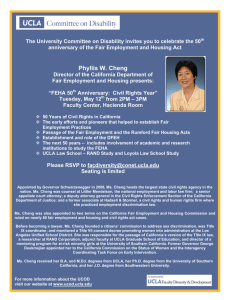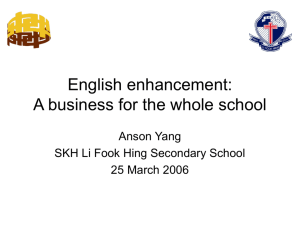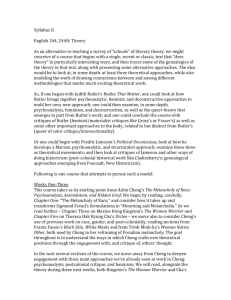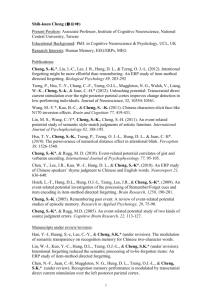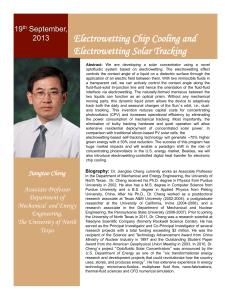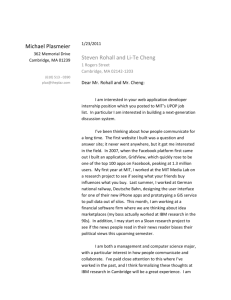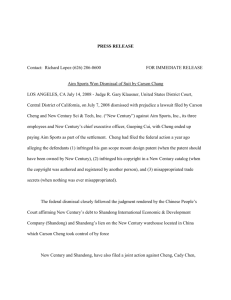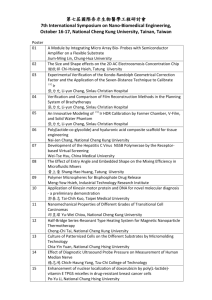CURRICULUM VITAE - Professor Expert
advertisement
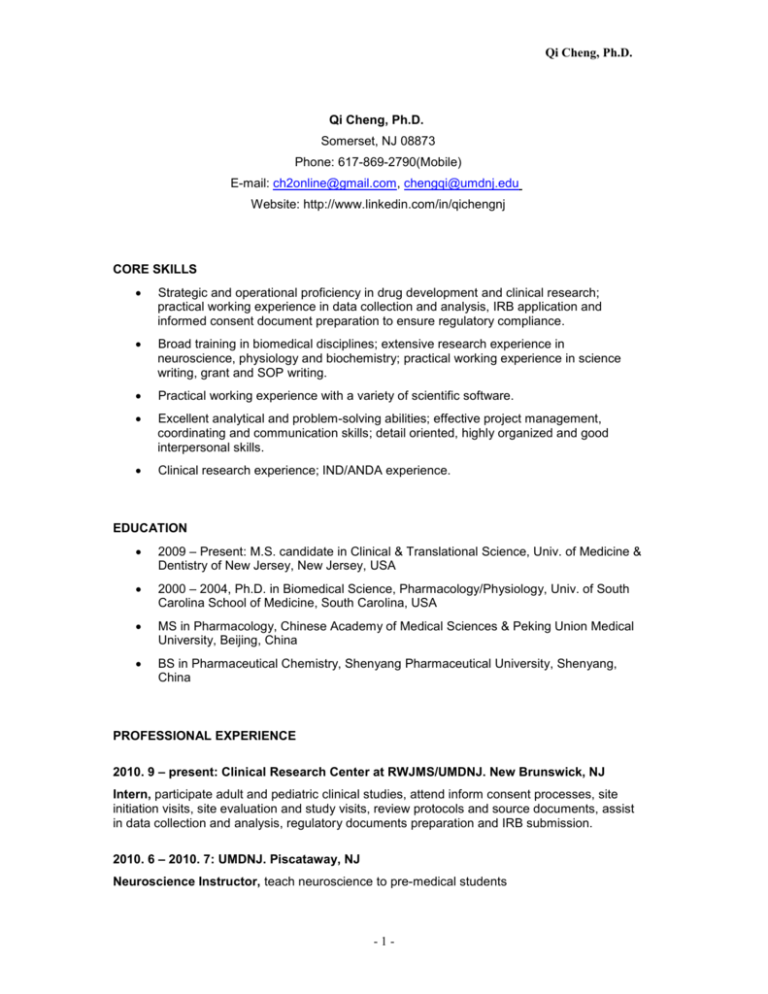
Qi Cheng, Ph.D. Qi Cheng, Ph.D. Somerset, NJ 08873 Phone: 617-869-2790(Mobile) E-mail: ch2online@gmail.com, chengqi@umdnj.edu Website: http://www.linkedin.com/in/qichengnj CORE SKILLS Strategic and operational proficiency in drug development and clinical research; practical working experience in data collection and analysis, IRB application and informed consent document preparation to ensure regulatory compliance. Broad training in biomedical disciplines; extensive research experience in neuroscience, physiology and biochemistry; practical working experience in science writing, grant and SOP writing. Practical working experience with a variety of scientific software. Excellent analytical and problem-solving abilities; effective project management, coordinating and communication skills; detail oriented, highly organized and good interpersonal skills. Clinical research experience; IND/ANDA experience. EDUCATION 2009 – Present: M.S. candidate in Clinical & Translational Science, Univ. of Medicine & Dentistry of New Jersey, New Jersey, USA 2000 – 2004, Ph.D. in Biomedical Science, Pharmacology/Physiology, Univ. of South Carolina School of Medicine, South Carolina, USA MS in Pharmacology, Chinese Academy of Medical Sciences & Peking Union Medical University, Beijing, China BS in Pharmaceutical Chemistry, Shenyang Pharmaceutical University, Shenyang, China PROFESSIONAL EXPERIENCE 2010. 9 – present: Clinical Research Center at RWJMS/UMDNJ. New Brunswick, NJ Intern, participate adult and pediatric clinical studies, attend inform consent processes, site initiation visits, site evaluation and study visits, review protocols and source documents, assist in data collection and analysis, regulatory documents preparation and IRB submission. 2010. 6 – 2010. 7: UMDNJ. Piscataway, NJ Neuroscience Instructor, teach neuroscience to pre-medical students -1- Qi Cheng, Ph.D. 2008. 7 – 2009. 8: Nathan Kline Institute. Orangeburg, NY. Research Scientist, key responsibilities include researching neurotransmissions of hippocampus in animal models: 2006. 8 – 2008. 6: George Washington University, Department of Pharmacology & Physiology. Washington, DC. Research Fellow, key responsibilities include conducting glycinergic and GABAergic neurotransmission in brainstem 2004. 8 – 2006. 7: Massachusetts General Hospital, Harvard Medical School. Boston, MA. Research Fellow, key responsibilities include conducting studies on the mechanisms of clinical anesthetics binding GABAA receptor 1998. 7 – 2000. 7: Beijing Honghui Medical Co. Beijing, China. Research Associate, key responsibilities include project management and preparation of regulatory filings to ensure rapid regulatory approval of cardiovascular and antiviral drugs Organize and manage regulatory filings of IND and ANDA of cardiovascular and tropical anti-virus products VOLUNTEER EXPERIENCE 2007 – 2008: Regular volunteer at the Kennedy Performance Center in Washington D.C. to guide and help patrons, answer phones, assist organizing festivals and performing events at the center. MEMBERSHIPS Society for Neuroscience, 2004 – present Sino-American Pharmaceutical Professionals Association (SAPA), 2009 – present REFERENCE Available upon request SELECTED PUBLICATIONS 1. “Abolishment of Serotonergic Neurotransmission to Cardiac Vagal Neurons During and After Hypoxia and Hypercapnia With Prenatal Nicotine Exposure” by Kamendi, H. W., Cheng, Q., Dergacheva, O., Gorini, C., Jameson, H. S., Wang, X., Michael J McIntosh, David Mendelowitz. J. Neurophysiol. 2009; 101:1141-1150. 2. “Recruitment of Excitatory Serotonergic Neurotransmission to Cardiac Vagal Neurons in the Nucleus Ambiguus Post Hypoxia and Hypercapnia” by Harriet Wangui Kamendi, Qi Cheng, Olga Dergacheva, Julie G Frank, Christopher Gorini, Heather S Jameson, Ramon A Pinol, Xin Wang, and David Mendelowitz. Journal of neurophysiology. 2008 Mar;99(3):1163-8. Epub 2008 Jan. 9. -2- Qi Cheng, Ph.D. 3. “Tryptophan Mutations at Azi-Etomidate photo-Incorporation Sites on α1 or β2 Subunits Enhance GABAA Receptor Gating and Reduce Etomidate Modulation” by Deirdre Stewart, Rooma J. Desai, Qi Cheng, Aiping Liu, and Stuart A. Forman. Molecular Pharmacology. 2008 September 19. 4. “Intracellular calcium regulates the responsiveness of cardiac L-type calcium current to protein kinase A: role of calmodulin” by Ken Walsh, Qi Cheng. AJP Heart Circ. Physiology. 2004 Jan; 286(1):H186-94. 5. “Overexpression of 1A integrin subunit or β 1A integrin tail interferes with β adrenergic regulation of the cardiac L-type calcium channel” by Qi Cheng, Robert. Ross, and Ken. Walsh. J Mol Cell Cardiol. 2004 Jun; 36(6):809-19. -3-
